NABERS delivers impact at speed and scale in FY23
NABERS has continued to expand its reach, with an increasing number of ratings in non-mandated sectors and through engagement across the industry.
Some highlights from the year include:
- 21% growth in Sustainable Portfolios Index ratings
- 27% increase in data centres rated
- 26% increase in offices with NABERS Indoor Environment ratings
- 200% growth in offices with NABERS Waste ratings of 5 or more stars
- 18% increase in shopping centres with repeat ratings
- 85% of survey respondents agreed with NABERS approach to measuring embodied carbon.
Some key industry achievements over the past two decades include:
- 1.7 billion dollars in energy bills saved by our customers
- 11.57 million tonnes of CO2 emissions saved
To see more on the evolution of NABERS over the past two decades, see the Life of Program Statistics.
NABERS Renewable Energy Indicator supports all-electric future
Two years in the making and developed in close consultation with industry, the NABERS Renewable Energy Indicator was launched to market in June 2023. We delivered 116 ratings in the first month after the launch – a sign of what’s to come.
The Indicator discloses the percentage of fossil fuels and clean renewable energy that a building consumes on every NABERS Energy certificate. This gives building owners, investors and tenants extra information as they make the transition to net zero.
Launch attracts industry attention
Launched online, the event attracted 200-plus people, breaking NABERS attendee records. The positive response from industry demonstrates a strong appetite for all-electric buildings – and for a mechanism that recognises all-electric buildings in the market.
The launch attracted strong media attention too. Speaking to The Fifth Estate, NABERS Director Carlos Flores said the Indicator supports the large number of developers already designing all-electric buildings, as well as those setting roadmaps to remove fossil fuels during capital upgrades.
“We are very thankful to the hundreds of organisations, individuals and industry bodies in the building sector who advocated for and helped shape the Renewable Energy Indicator over the past two years,” Carlos said. “Their efforts were instrumental in designing a new Indicator that is helping NABERS evolve to drive buildings to be energy efficient as well as fully decarbonised.”
The Renewable Energy Indicator is strongly aligned with other industry standards, including the Green Building Council of Australia’s (GBCA’s) Green Star rating system and Climate Active’s Carbon Neutral Standard for Buildings.
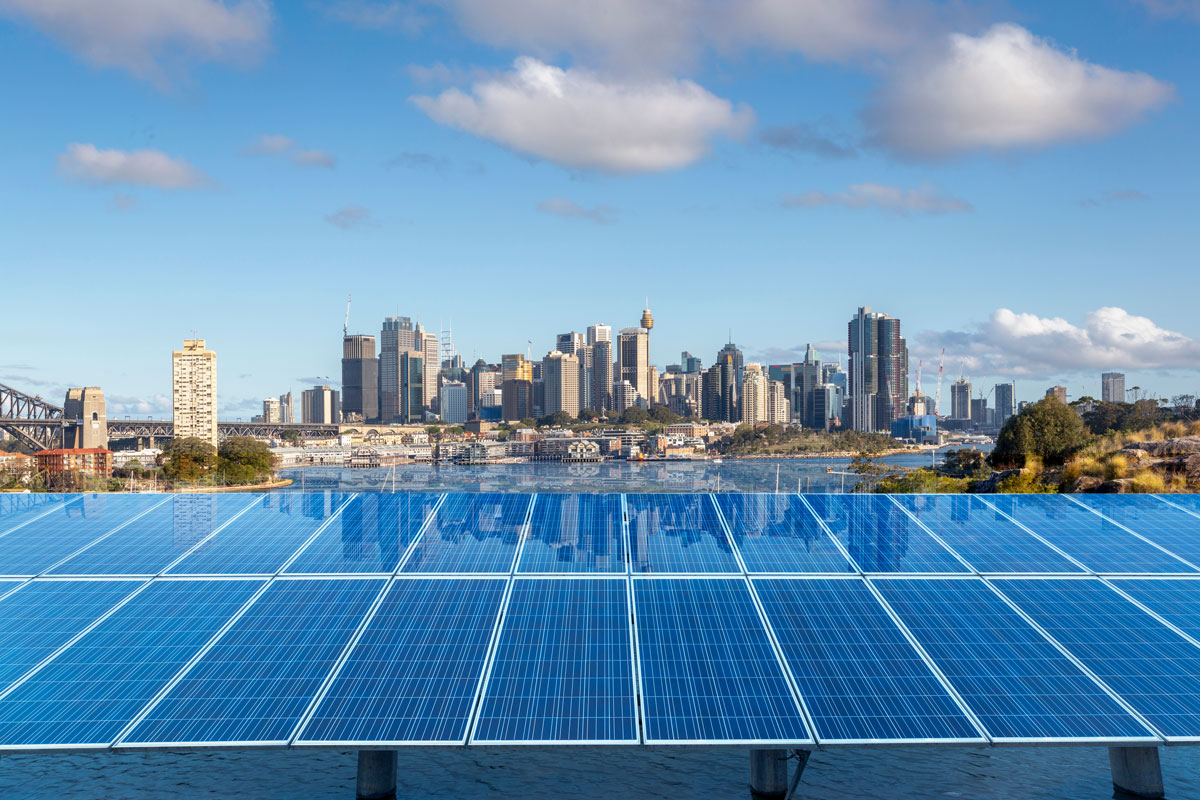
Image: Renewable Energy Indicator launches in June 2023
New certificate and online training for Assessors
The launch of the Renewable Energy Indicator was accompanied by extensive training to upskill NABERS Assessors on how the Indicator interacts with NABERS ratings.
By incorporating the Renewable Energy Indicator on every NABERS certificate, owners, managers, tenants and investors gain a high-level view of how their building is performing.
Assessors have hailed this as a game changer that will better recognise and reward the generation and purchase of renewable energy.
Building owners are also supportive. As Steve Ford, The GPT Group’s Head of Sustainability and Energy, notes: “A simple outcome of stars, and now renewable energy percentages, can be what attracts green finance or gets buy-in for energy efficiency projects. The uplift in a NABERS rating can be the extra incentive that gets capital investment over the line.”
NABERS sets out to tackle embodied carbon
This year, we asked for feedback on the proposed rating methodology for a new embodied carbon standard and the response from industry was emphatic: 85% of respondents either agreed or strongly agreed with our approach.
Embodied carbon is a complex and interconnected issue with many competing interests and priorities – and that’s why collaboration across the value chain is mission critical.
NABERS has been working in partnership with the GBCA and collaborating with the property, construction and building industry, and with governments across Australia, to develop a standard that can measure, verify and compare embodied carbon in new buildings and major refurbishments.
Public consultation on 10 foundational proposals – co-designed and tested with all sectors of the building industry – closed in February 2023.
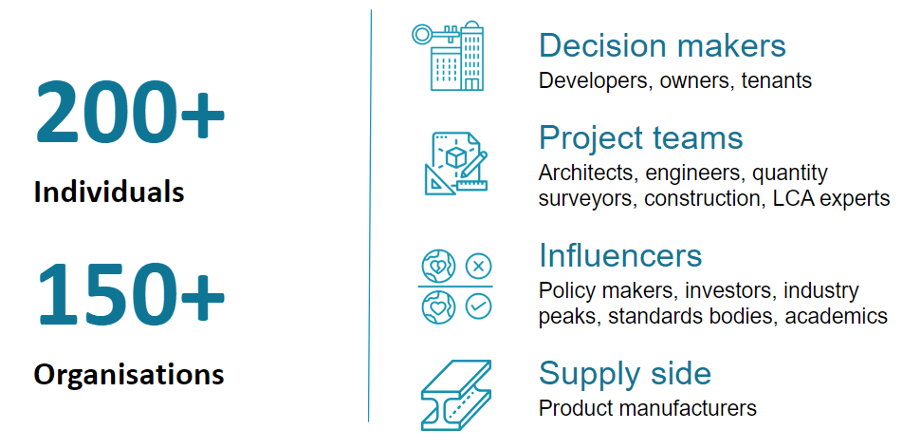
With a standard method of measurement for embodied carbon, project teams can set targets and limits. This standard promises to harness the collective power of the building sector to drive demand for low-carbon design practices and construction materials.
We have now started developing the rating tool and will launch NABERS for Embodied Carbon in mid-2024.
NABERS expands to more building sectors…
NABERS takes the temperature of warehouses and cold stores
Australia’s growing footprint of warehouse and cold storage facilities connect increasingly complex supply chains – and as the sector grows, so does the desire to better measure and manage performance.
In September 2022 NABERS launched a rating tool to help owners and operators of warehouses and cold stores. Speaking at the launch, the Australian Government’s Assistant Minister for Climate Change and Energy, Jenny McAllister, hailed the new rating tool as another step towards “the broad effort of industry, business and communities across the country in securing the future of our energy system, our economy and our climate”.
NABERS worked with a range of warehouse and cold store owners and tenants to collect data on energy use, area or volume, and operational factors. This data informed a building-specific benchmark that was piloted across 17 facilities in diverse climate zones. We consulted with providers, peak bodies and experienced consultants, and used data gathered from more than 150 facilities to develop the energy ratings for these crucial sectors.
The first ratings have been lodged and we look forward to sharing stories of leadership from this sector in the months ahead.
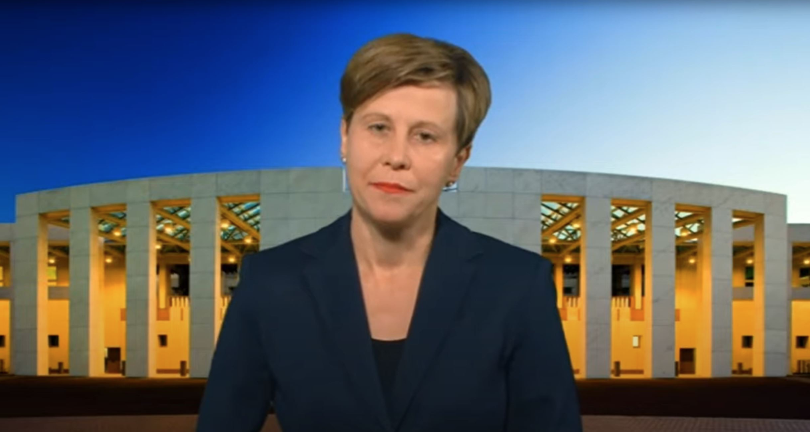
Image: Federal Assistant Minister for Climate Change and Energy, Jenny McAllister, delivering the opening address at the launch of NABERS Energy for Warehouses and Cold Stores.
Classrooms to count stars with NABERS ratings for schools
Australia has more than 9,600 schools – and every single one will soon be able to achieve NABERS Energy and Water ratings.
The NABERS team has been working hard to design a robust methodology for schools to measure, manage and improve their sustainability performance.
This year, we collaborated with various state and territories’ education departments to develop a portfolio-style tool as a low-cost and effective solution. Leaders from several private and systemic schools, industry experts and education peak bodies were also consulted through working groups.
The benchmarks are based on a vast data set from 7,940 schools in diverse climate zones. Pilot ratings are now progressing across more than 45 schools, with the tool planned for launch at the end of 2023.

Image: 9,600 schools across Australia can soon benchmark using the NABERS Energy and Water ratings
Boutiques to big box retail stores poised for NABERS ratings
NABERS began rating shopping centres in 2010 – but tens of thousands of retail stores still fall outside our scope.
To accelerate the retail sector’s decarbonisation efforts, the NABERS team has been working on a new NABERS Energy rating tool for retail stores. More than 25 retail organisations and peak bodies have joined the NABERS Accelerate program to speed up the development process.
We have collected data from a diverse range of 4,000-plus retail stores to create a robust benchmark. The data set captures everything from department stores within shopping malls to big box retail to small specialty shops.
NABERS Energy for Retail Stores will launch in 2024, so keep an eye out for the retail energy revolution ahead.
NABERS evolves to meet the market
Efficiency at Assessors’ fingertips with NABERS Perform
Technology plays a central role in the transition to net zero – and this year we rolled out the NABERS Perform technology platform to new sectors to make it even easier for NABERS Assessors to complete ratings.
NABERS Perform now allows Assessors to lodge, access and modify ratings for offices and hotels, as well as shopping centres, residential aged care and retirement living.
NABERS Perform provides quick access to rating data, is intuitive and easy to use, and reduces manual data input which means Assessors can complete ratings in less time.
Funded in partnership with the Australian Government, NABERS Perform was developed following extensive consultation and input from NABERS Assessors and customers. Further large-scale ongoing development is planned.
In the meantime, NABERS Assessors are reaping the rewards. As Assessor Paul Thomas of Stantec confirmed: “Compared to the old platform, NABERS Perform has made entering rating data quicker and simpler, saving us a significant amount of time on the initial data entry and subsequent updates.”
Online reverse calculators make rating estimation even easier
NABERS reverse calculators are a simple way to understand the maximum amount of energy and water a building can use to achieve a desired rating. This year we transitioned our reverse calculators online to make estimating a rating even easier. The enhancements we’ve made will help more building owners and operators to gather up-to-date and accurate information as they set rating targets.
Maintaining momentum by spreading the NABERS message
We know everyone in Australia’s built environment sector has a role to play in the shift to an all-electric, net-zero future – and our team is out there talking to people, sharing knowledge, listening and learning from feedback, building networks and championing solutions.
Our leaders were proud to join their peers at everything from large national summits to intimate roundtable discussions this year. We were invited to present at the Energy Efficiency Council’s Summit and the Green Building Council of Australia’s TRANSFORM 2023 conference. We joined panel discussion at events hosted by MECLA, CitySwitch and the Australian Trade & Logistics Corporation. And we used our platform to maintain momentum, so we can all move further and faster together.
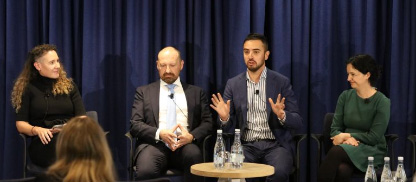
Image: Frankie Muskovic (Property Council of Australia), David Palin (Mirvac), Carlos Flores (NABERS) and Davina Rooney (Green Building Council of Australia) appear on the Commercial Buildings Panel at the 2022 National Energy Efficiency Summit in October 2022.
Accelerating Net Zero Buildings
The NSW Government is investing $4.8 million in Accelerating Net Zero Buildings – an initiative that includes financial support for NABERS ratings of existing buildings and NABERS Commitment Agreements for new buildings. Accelerating Net Zero Buildings is also supporting the development of a world-leading framework to measure, benchmark and certify emissions from construction and building materials.
Energy Starters empower rising stars
The Energy Starters program helped 67 buildings to start their energy efficiency journey this year – a 65% increase on FY22.
Residential aged care and retirement living assets accounted for 58% of ratings, and warehouse and cold stores for 27%.
Australian Unity’s assets in NSW were among those that started the NABERS rating process for the first time, thanks to Energy Starters grant funding. As Parag Shinde, Australian Unity’s National Manager – ESG (Property) notes: “We know the value of NABERS as an independently verified and widely recognised benchmark. We also know it can be challenging to achieve NABERS ratings in asset classes that have just started their ESG journey, but at Australian Unity our team is getting on with it.”
With the support of Energy Starters grants, we expect the uptake of NABERS ratings and energy efficiency practices to continue its positive trajectory throughout FY24.
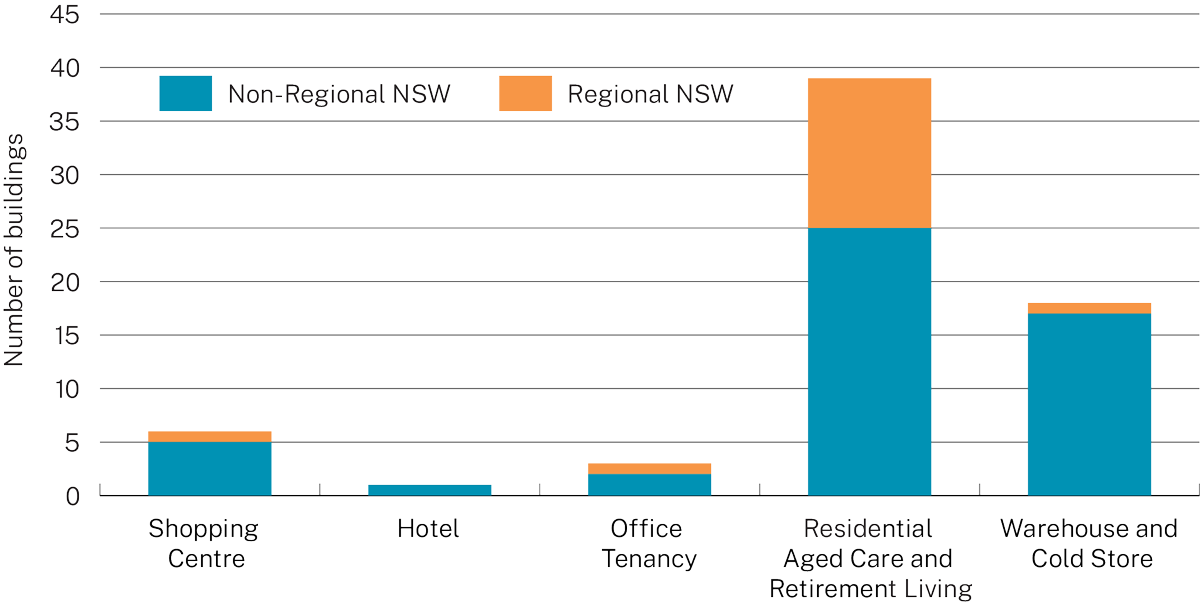
Commitment Agreements close the performance gap for new buildings
Commitment Agreements help project teams to set ambitious energy performance targets as their buildings come to life and to use the trusted NABERS brand to share their sustainability stories with tenants, investors, financiers and more. NSW Government funding also helped us waive Commitment Agreement fees for new building developments in NSW.
Project teams that sign a NABERS Commitment Agreement overwhelmingly meet their target rating. In fact, our latest data shows that 86% of buildings with NABERS Commitment Agreements achieve their goal, and over a third (36%) exceed their target within the first two ratings.
Collaborating with our customers and Assessors
Data drives decision making with NABERS Sustainable Portfolio Index
Sixty-four property portfolios – and a quarter of Australia’s office market – participated in the 2023 NABERS Sustainable Portfolio Index (SPI).
Now in its fifth year, the SPI offers the only publicly available whole-of-portfolio view of the actual performance of Australia’s office and retail assets. Announcing the results, NABERS Director Carlos Flores noted that “investors and property owners want efficient, resilient and sustainable assets – and the 21% growth in participating portfolios confirms this trend”.
Two new companies joined the Index in 2023, Mirvac and Elanor Investments, taking the total companies participating to 27.
The SPI Office Energy Index included ratings on 418 assets, amounting to 8.56 million sqm of rated area, or 27% of the national office market.
The SPI Office Water Index followed closely behind, with 385 assets representing 8.22 million sqm of rated area, or 26% of the total national office market.
The number of funds disclosing Indoor Environment performance grew by 38%, with eight new funds listed. Two new funds disclosed Waste ratings, driving a 20% increase in the Waste Index.
The number of portfolios disclosing their ratings is important – as it not only confirms the clear trajectory of industry leadership, but also strengthens the value of the NABERS SPI. As Charter Hall’s Group Head of ESG, Andrew Cole, notes: “Third-party verification such as the NABERS Sustainable Portfolio Index supports our ongoing monitoring and disclosure of our ESG performance. It also enables our participation in emerging sustainable finance, where we have $3.4 billion in sustainable finance transactions currently.”

Image: Brisbane CBD saw multiple portfolios participate in the 2023 Sustainable Portfolios Index (SPI)
Outreach and training for local governments
With funding from the Australian Government’s Department of Climate Change, Energy, the Environment and Water (DCCEEW), NABERS developed a series of case studies, four training courses and resources for local governments across Victoria, Queensland, Western Australia and South Australia.
These materials were designed to improve the knowledge and capacity of planning professionals and to help local councils understand and use sustainability tools like NABERS Commitment Agreements in the planning approvals process.
We also re-launched the Using NABERS for Sustainable Building Planning in Victoria training course in March 2023, attracting more than 170 people, including 80 people from state and local governments.

Image: NABERS launches a new course for sustainability professionals in Victoria
Rules and ratings adapt and evolve
NABERS Rules are used by Assessors to rate the performance of buildings. This year, we made substantial changes to simplify the rating process for Assessors as we transitioned to the NABERS Perform platform, and to introduce the new Renewable Energy Indicator.
Following on from an update to the Energy and Water for Hotels Rules in October 2022, major updates to the two most-used Rules documents in the NABERS stable were released in June 2023: the Metering and Consumption Rules and the Energy and Water for Offices Rules.
The Rules for the new Energy for Warehouses and Cold Stores ratings were released in August 2022.
Working together through NABERS-hosted webinars and online events
The NABERS team is committed to collaboration. To do this, we regularly share information to keep our Assessors and customers up to date on our work and to incorporate their insights and expertise into every new NABERS project.
This year, we hosted NABERS conference satellite events across six cities, launched ratings for warehouses and cold stores with an industry panel, and hosted webinars on the Renewable Energy Indicator, embodied carbon consultation and other technical topics. We brought together Assessors to share best practice information on tenancy lighting assessments (TLAs) and gathered education experts across the country for their input into the new rating tool for schools.

Image: Members of the NABERS Government Schools Technical Working Group in February 2023
Energising our training
This year NABERS released two new training courses, as well as training material to support new tools and updates. More than 120 people attended the Energy for Warehouses and Cold Stores training course, while our NABERS Sustainable Finance course attracted 130-plus participants.
The new training courses included extensive information to support the Renewable Energy Indicator and Perform for Offices launches.
New fact sheets bridge the information gap
The first NABERS rating can be daunting, so this year we developed a suite of case studies and fact sheets with simple and easy information for Assessors to share with first-time customers. The case studies and fact sheets were developed in collaboration with DCCEEW in response to Assessor feedback and to help bridge the information gap when customers are starting their NABERS journey.
A simple energy comparison tool for new sectors
Our footprint of rating tools continues to expand, but dozens of building types still fall outside the NABERS sphere of influence. This year we took a significant step towards a new NABERS Energy rating tool that provides a simple energy comparison for new sectors outside NABERS’ current offerings.
We undertook market and user research to understand the value and demand for this type of tool and what users could expect. A simple prototype was positively received during testing by potential users in targeted sectors. We are finalising the plan to develop and launch the tool with support from DCCEEW during the next calendar year.
Many communication channels, multiple connections
The NABERS team is committed to keeping our stakeholders up to date with new tools, launches, training and other developments. We use integrated campaigns that include electronic direct mail, social media, events and website updates to communicate and engage with our audiences. This financial year the NABERS LinkedIn page reached 10,000 page followers and we continue to embrace new channels to engage a wide audience in conversations.
NABERS international
NABERS launched in the United Kingdom in 2020 and since then we’ve seen increasing interest in NABERS from other countries.
We are currently laying the groundwork with the German government and the German industry initiative for energy efficiency, DENEFF to pilot the NABERS Energy for Offices tool.
We are also engaging with the Irish Green Building Council and Irish Government, Singapore’s Ministry of Trade and Industry and the Building and Construction Authority, and have attracted interest from China, the Pacific and Poland.
NABERS UK
NABERS UK went from strength to strength over the year, underpinned by unswerving industry support. The Whole Building and Tenancy rating tools were launched in April 2023, completing the suite of NABERS UK Energy for Offices tools and enabling all office buildings to obtain a rating, regardless of their metering arrangements.
We’ve seen continued strong uptake in Design for Performance registrations, Assessor licences and the NABERS UK Assessor training. We look forward to seeing these translate into ratings over the coming year.
NABERS Director Carlos Flores travelled to London in June 2023 to present to multiple influential industry organisations and government agencies over three days, including the Chartered Institution of Building Services Engineers (CIBSE), the City of London Corporation, the Government Property Agency and members of the Better Buildings Partnership.

Image: Tom Wilson (BRE), Robert Cohen (Verco), Diana Rico-Roa (ESG Plus), Carlos Flores (NABERS) and Rob MacWhannell (BBP) gather for the CISBE UK event on lessons learnt during the implementation of NABERS UK.
NABERS NZ
NABERS NZ continues to thrive under the administration of the New Zealand Green Building Council, which offers NABERS Energy for Office ratings. A total of 132 certified ratings over the financial year represents another record since NABERS NZ was launched and a 26% increase on the results posted in the previous financial year.
NABERS recently renewed its license agreement with the New Zealand Energy Efficiency and Conservation Authority and expanded the agreement to include NABERS Energy and Water for Public Hospitals.
An offer to pilot ratings for buildings in New Zealand has commenced to allow NABERS and NZGBC to test the suitability of the full suite of NABERS tools for the New Zealand market.
A flexible and future-focused team
NABERS five-year strategic plan
The current NABERS five-year plan runs from 1 July 2019 to 30 June 2024 with two core goals:
- Every major building type can be rated by NABERS
- Double the number of NABERS ratings by driving uptake and improving our existing tools.
This year, NABERS commenced its review process and confirmed the five-year plan is on track. Current analysis indicates that, by the end of the five-year period, NABERS will be close to achieving both goals.
In May 2023 NABERS conducted an all-of-staff workshop to unpick the learnings of the current strategic plan and begin setting goals for the next one. Our team is proud of our role supporting industry transformation and determined to drive further uptake of NABERS in the years ahead.

Image: The NABERS team gathers in May 2023 for a five-year plan strategic workshop.
A fit-for-future structure
Over the last year, the NABERS team has worked flexibly to deliver impact at speed and scale. As the scope and influence of NABERS ratings has grown, and as tool development and overall activity has increased, so too has the NABERS team. We grew our headcount by 38% over the last year.
After a thorough analysis by an external consultant, NABERS adopted a new structure to add a new stream, Market Transformation. This allows us to work more effectively and service our growing customer base. The transition process involved extensive consultation and workshops with the NABERS team.
With our fit-for-future structure, we are excited to be working alongside our stakeholders to build a more sustainable tomorrow.



Image: The NABERS Team collaborated at various team events.
